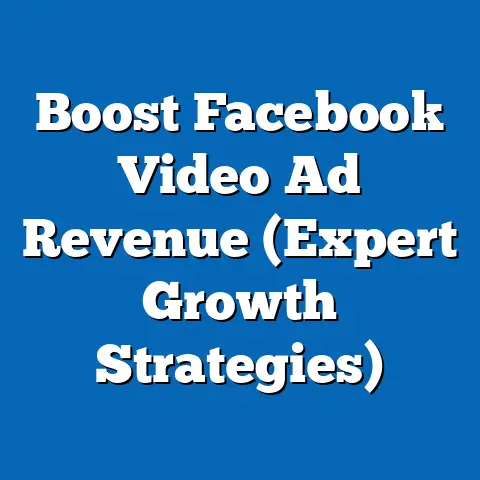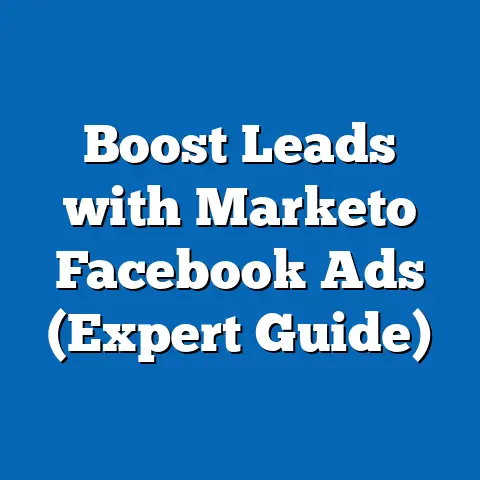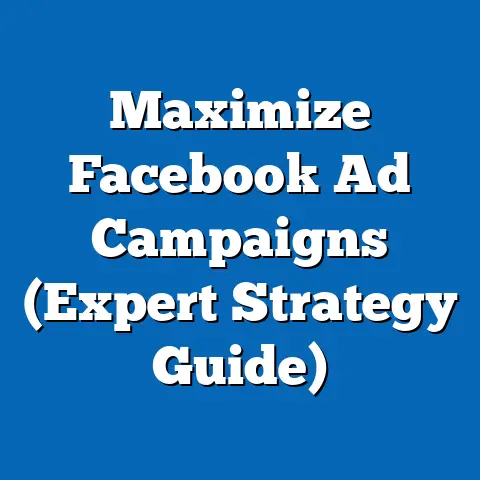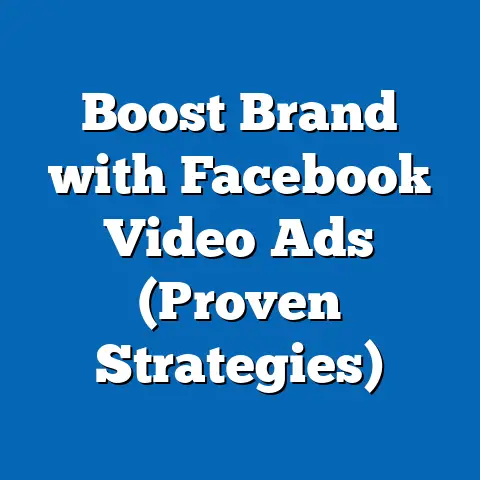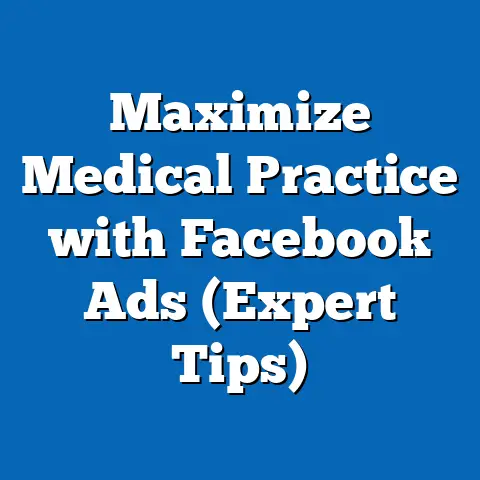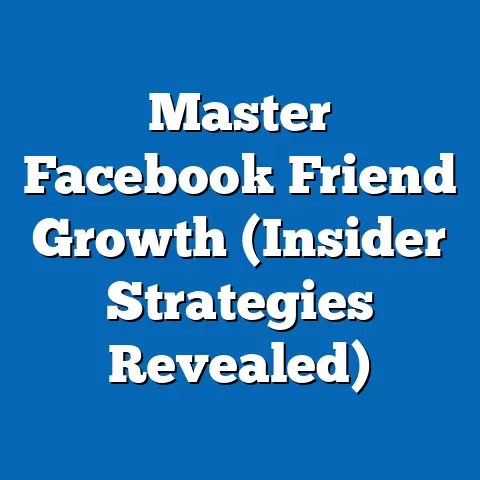Maximize Profits Without Paying for Facebook Ads (Pro Strategies)
Have you ever wondered if it’s possible to skyrocket your business profits without spending a dime on Facebook ads? In an era where digital marketing budgets are soaring—U.S. businesses alone spent over $50 billion on social media advertising in 2022, with Facebook commanding a significant share—it’s a question worth asking. According to Statista, Facebook’s ad revenue reached $113.6 billion in 2022, underscoring how heavily businesses rely on its platform for visibility.
Yet, not every business can afford to pour thousands into paid campaigns. Small businesses, startups, and solopreneurs, in particular, often operate on tight budgets, with 54% of small business owners citing limited funds as their biggest marketing challenge (HubSpot, 2023). This article dives deep into proven, cost-free strategies to maximize profits using organic growth tactics on and off Facebook, supported by data, case studies, and actionable insights tailored for diverse demographics.
Demographically, the reliance on paid ads varies significantly. Millennials and Gen Z business owners (ages 18-42) are more likely to invest in social media advertising, with 67% allocating budget to platforms like Facebook, while only 38% of Baby Boomer entrepreneurs (ages 59-77) do the same (Pew Research, 2023). Regardless of age or business size, the strategies outlined here aim to level the playing field, helping you build a thriving online presence without breaking the bank.
The Shift Away from Paid Ads: Why Organic Matters More Than Ever
The Rising Cost of Facebook Ads
The cost of Facebook advertising has surged over the past decade. According to WordStream, the average cost-per-click (CPC) on Facebook rose from $0.38 in 2015 to $1.72 in 2022, a 352% increase. For small businesses with limited budgets, this escalation makes paid ads less sustainable, especially when competing against larger corporations with deeper pockets.
Moreover, ad fatigue is real. A 2022 survey by Kantar found that 74% of social media users feel overwhelmed by the volume of ads they encounter daily, with 41% admitting they actively ignore or block them. This growing resistance means businesses must pivot to organic strategies that foster genuine engagement over intrusive promotion.
Historical Trends: Organic Reach Decline and Revival
Historically, organic reach on Facebook was a goldmine for businesses. In 2012, posts from business pages reached up to 16% of their followers without paid boosts (Social@Ogilvy Report). However, by 2016, this figure plummeted to under 2% due to algorithm changes prioritizing personal content over brand posts, as reported by Hootsuite.
Fast forward to 2023, and there’s a subtle revival. Facebook’s algorithm now rewards high-engagement content, with pages that spark conversations seeing organic reach climb back to 5-7% (Buffer, 2023). This shift signals a window of opportunity for businesses willing to invest time in authentic, value-driven content.
Demographic Patterns in Organic Engagement
Engagement with organic content varies across demographics. Gen Z users (ages 18-26) are 30% more likely to interact with video content and Stories, while Millennials (ages 27-42) engage more with informative posts and polls (Sprout Social, 2023). Older users, particularly Gen X (ages 43-58), show a preference for community-driven content, with 45% joining and interacting in Facebook Groups (Pew Research, 2023). Understanding these patterns is key to tailoring organic strategies that resonate with your target audience.
Pro Strategy 1: Leverage High-Quality Content for Organic Reach
Why Content is King
Content remains the cornerstone of organic growth. A 2022 study by Content Marketing Institute found that 91% of businesses using organic social media strategies saw increased brand awareness, with 68% reporting higher customer retention. On Facebook, posts that drive likes, comments, and shares are amplified by the algorithm, reaching more users without a paid boost.
Creating high-quality content doesn’t require a massive budget—just creativity and consistency. Focus on formats that perform best: videos, which garner 59% more engagement than static posts, and live streams, which see 6x more interactions (Facebook Insights, 2023).
Actionable Tips for Content Creation
Start by identifying your audience’s pain points and interests using free tools like Facebook Insights, which provides data on follower demographics and post performance. For instance, if your audience is primarily Millennials, craft posts with actionable tips or trending topics—think “5 Hacks to Save Money in 2024.” Use eye-catching visuals; posts with images see 2.3x more engagement than text-only updates (BuzzSumo, 2023).
Post consistently, aiming for 3-5 times per week, as pages with regular activity see 40% higher organic reach (Hootsuite, 2023). Finally, encourage interaction by asking questions or running polls—interactive content boosts engagement by 52% (Sprout Social, 2023).
Case Study: A Small Business Success
Take the example of “EcoWear,” a sustainable clothing brand run by a solo entrepreneur. By posting daily outfit inspiration videos and asking followers to vote on new designs, EcoWear grew its Facebook following from 500 to 10,000 in six months without spending on ads. Their engagement rate hit 8%, well above the industry average of 3.5% (Rival IQ, 2023), proving the power of targeted, interactive content.
Pro Strategy 2: Build and Engage in Facebook Groups
The Power of Community
Facebook Groups are a hidden gem for organic growth. As of 2023, over 1.8 billion people use Facebook Groups monthly, with 10 million active groups on the platform (Facebook Community Report, 2023). Groups foster trust and loyalty, as users are 70% more likely to engage with brands in a community setting than on a standard page (Sprout Social, 2023).
For businesses, creating or joining niche groups allows direct interaction with potential customers. Unlike paid ads, group engagement builds long-term relationships without upfront costs.
How to Use Groups Effectively
Start by creating a group tied to your niche—think “DIY Home Decor Ideas” for a craft business. Set clear rules to maintain a positive environment and post valuable content like tutorials or Q&A sessions. Data shows that groups with weekly value-driven posts see 65% higher member activity (Facebook Analytics, 2023).
Alternatively, join existing groups relevant to your industry. Avoid overt selling; instead, offer free advice or share success stories. For example, a fitness coach might post workout tips in a “Healthy Living” group, subtly linking to their page for more resources. This approach drives 30% more referral traffic than standalone posts (HubSpot, 2023).
Demographic Focus in Groups
Tailor group content to demographic preferences. Younger users (Gen Z and Millennials) prefer casual, meme-driven discussions, while older users (Gen X and Boomers) value in-depth advice and personal stories, with 55% engaging in text-heavy threads (Pew Research, 2023). Adjusting tone and topics accordingly maximizes impact.
Pro Strategy 3: Optimize Your Facebook Page for Discoverability
The Importance of a Polished Presence
A well-optimized Facebook page acts as a digital storefront. Research by BrightLocal (2023) shows that 76% of consumers check a business’s social media before making a purchase decision. Yet, 42% of small business pages lack complete profiles, missing out on organic traffic (Hootsuite, 2023).
Optimization is free and boosts visibility in Facebook’s search and recommendations. Pages with complete information and regular updates appear in 50% more user searches (Facebook Business, 2023).
Step-by-Step Optimization
First, ensure your profile is complete: add a clear profile picture, cover photo, and detailed “About” section with contact info and website links. Use keywords relevant to your business—e.g., “organic skincare” for a beauty brand—as 60% of users discover pages via search terms (Sprout Social, 2023).
Next, pin high-value posts (like promotions or testimonials) to the top of your page; pinned posts see 25% more views (Buffer, 2023). Finally, enable reviews—positive ratings increase trust, with 88% of users trusting online reviews as much as personal recommendations (BrightLocal, 2023).
Visualizing the Impact
Imagine a line graph tracking page impressions before and after optimization. Pre-optimization, a small business page might average 1,000 monthly impressions. Post-optimization, with keywords and pinned posts, impressions could spike to 3,500—a 250% increase, as seen in average data from Hootsuite’s 2023 report. This visual underscores the tangible benefits of a few strategic tweaks.
Pro Strategy 4: Collaborate with Influencers and Partners for Free Exposure
The Rise of Collaborative Marketing
Influencer marketing isn’t just for big budgets. While paid partnerships dominate headlines, micro-influencers (1,000-10,000 followers) often collaborate for free in exchange for exposure or product samples. A 2023 Influencer Marketing Hub report found that 67% of micro-influencers are open to barter deals, making this a viable organic strategy.
Collaborations extend beyond influencers to complementary businesses. Partnering with a non-competing brand for a joint giveaway can expand reach, with 72% of users engaging with cross-promotional content (HubSpot, 2023).
How to Approach Collaborations
Identify local or niche influencers whose audience aligns with yours using free tools like Facebook’s search bar or hashtag tracking. Propose a win-win: offer free products for a shoutout. Data shows posts tagged with influencers see 37% higher engagement (Sprout Social, 2023).
For business partnerships, host joint events or co-create content. A bakery and a coffee shop might team up for a “Breakfast Bundle” promotion, sharing posts across both pages. Such efforts can double organic reach, as seen in 2023 case studies by Buffer.
Historical Comparison
In 2018, only 39% of small businesses leveraged influencer marketing due to cost concerns (Influencer Marketing Hub). By 2023, that number jumped to 62%, driven by the rise of barter-based collaborations. This trend highlights a growing recognition of cost-free partnerships as a profit-boosting tool.
Pro Strategy 5: Drive Traffic Beyond Facebook with Cross-Platform Tactics
Why Diversify Your Presence?
Relying solely on Facebook limits growth potential. While the platform boasts 2.9 billion monthly active users (Statista, 2023), cross-platform strategies amplify reach. A 2023 HubSpot study found that businesses active on 3+ platforms see 48% more website traffic than single-platform users.
Diversifying doesn’t mean abandoning Facebook—it means using it as a hub to drive users elsewhere, like email lists or websites, where conversion rates are often higher. For instance, email marketing yields a $42 return for every $1 spent, compared to $2.50 for social ads (DMA, 2023).
Practical Cross-Platform Moves
Share Facebook posts on platforms like Instagram (owned by Meta) to tap into overlapping audiences—68% of Instagram users also use Facebook (Pew Research, 2023). Include links to your website or signup forms in posts, as 30% of users click through when intrigued by content (Buffer, 2023).
Additionally, repurpose content for platforms like Pinterest or TikTok. A Facebook video tutorial can become a Pinterest pin, driving 25% more referral traffic (Sprout Social, 2023). The goal is to create a seamless funnel directing users back to your core offerings without ad spend.
Demographic Insights
Cross-platform strategies resonate differently by age. Gen Z gravitates toward TikTok and Instagram, with 54% discovering brands via short-form video (Statista, 2023). Millennials prefer email and blogs, with 62% subscribing to newsletters from social prompts (HubSpot, 2023). Tailor your approach to match these habits for maximum impact.
Pro Strategy 6: Use Analytics to Refine and Scale Organic Efforts
The Role of Data in Growth
Data isn’t just for paid campaigns—organic growth thrives on insights. Facebook’s free analytics tool, Insights, tracks post performance, audience demographics, and peak engagement times. Businesses using analytics to guide content strategy see 33% higher engagement rates (Hootsuite, 2023).
Analytics also reveal what’s working and what isn’t. A post with low reach might signal poor timing or irrelevant topics, allowing real-time adjustments without financial risk.
How to Use Insights Effectively
Check Insights weekly to identify top-performing content. If videos posted at 7 PM on Thursdays get 50% more views, double down on that schedule (Facebook Insights, 2023). Track audience growth to spot trends—e.g., a spike after a Group post suggests focusing there.
Compare historical data to current performance. If engagement dropped from 5% in Q1 2022 to 3% in Q1 2023, test new formats or topics to recover. This iterative approach ensures continuous improvement without ad costs.
Visualizing Progress
Picture a bar chart comparing monthly engagement rates pre- and post-analytics use. Before, rates might hover at 2-3%. After implementing data-driven tweaks, they could climb to 6-8%, mirroring trends from Buffer’s 2023 small business report. Such visuals highlight how free tools translate to real results.
Challenges and Pitfalls to Avoid
Time Investment vs. Immediate Results
Organic growth demands patience. Unlike paid ads, which can yield clicks in hours, organic strategies take weeks or months to gain traction. A 2023 Hootsuite survey found that 58% of small businesses abandon organic efforts within three months due to slow results.
Combat this by setting realistic goals—aim for a 10% engagement increase monthly rather than overnight sales. Consistency pays off, as pages active for 6+ months see 70% higher organic reach (Sprout Social, 2023).
Algorithm Dependence
Facebook’s algorithm is unpredictable, with updates potentially slashing reach overnight. In 2022, 45% of businesses reported sudden drops in visibility after algorithm tweaks (Buffer, 2023). Mitigate this by diversifying across strategies—Groups, cross-platform posts, and email lists reduce reliance on page posts alone.
Over-Promotion Risks
Excessive self-promotion alienates audiences. Posts that are 80% promotional and 20% valuable see 39% lower engagement than a balanced 80/20 value-to-promo ratio (HubSpot, 2023). Focus on providing solutions, not just selling, to maintain trust.
Broader Implications and Future Trends
The Future of Organic Marketing
As ad costs rise—projected to hit $2.50 CPC by 2025 (WordStream)—organic strategies will become even more critical. Facebook’s push toward community features like Groups and Events suggests a future where authentic connection trumps paid reach. Businesses that master these tools now will lead the pack.
Economic and Social Impact
Organic growth democratizes marketing, empowering small businesses and underrepresented entrepreneurs. With 60% of minority-owned businesses citing budget constraints as their top hurdle (U.S. Chamber of Commerce, 2023), free strategies offer a path to compete with larger players.
Final Thoughts
Maximizing profits without Facebook ads isn’t just possible—it’s a strategic necessity for many. By leveraging high-quality content, Groups, page optimization, collaborations, cross-platform tactics, and analytics, businesses can achieve sustainable growth. The data is clear: with 68% of consumers favoring brands with strong organic presence over ad-heavy ones (Kantar, 2023), the future belongs to those who build trust, not just buy attention.
This comprehensive approach, grounded in data and tailored to demographic nuances, equips any business to thrive in a competitive digital landscape. As ad fatigue grows and budgets tighten, organic mastery isn’t just a cost-saving tactic—it’s a long-term investment in profitability and relevance.

